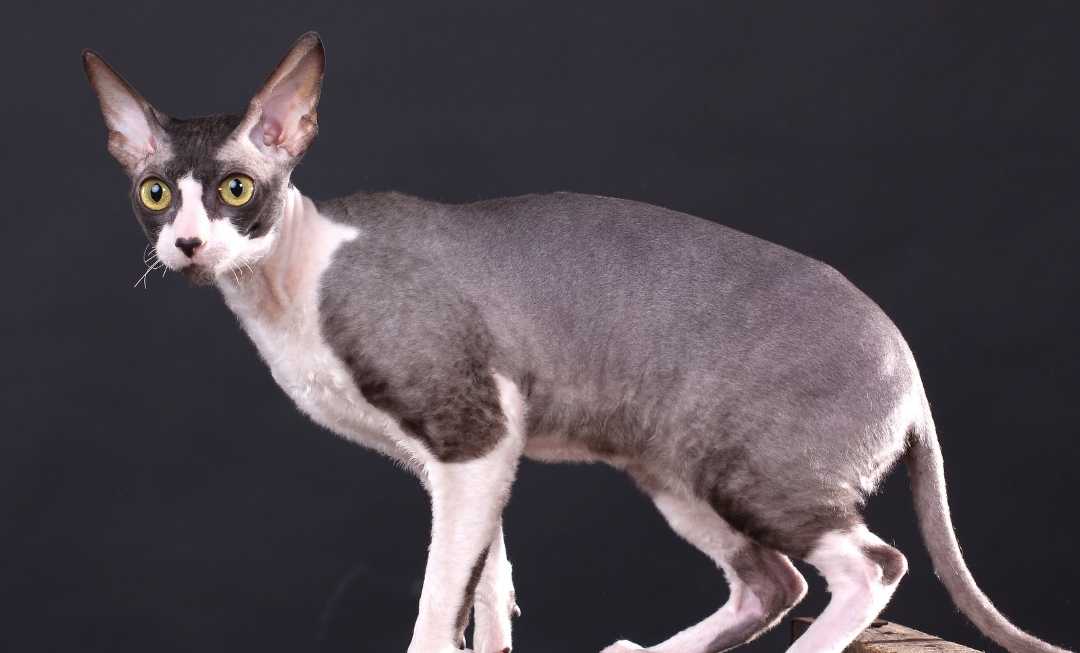
The Cornish Rex, with its distinctive curly coat and playful personality, is a breed that captures the hearts of cat lovers everywhere. Originating from Cornwall, England, this unique feline stands out for its striking appearance and energetic and affectionate nature. Renowned for their intelligence and agility, Cornish Rex cats are often described as the “clowns” of the cat world, bringing joy and laughter to their households. Whether you’re a seasoned cat owner or a first-time adopter, exploring the enchanting world of the Cornish Rex will surely leave you enchanted by their charm and charisma. Join us as we delve into this delightful breed’s fascinating characteristics, history, and care requirements.
Meet the Cornish Rex, a cat with a unique history as curly as its coat. The first Cornish Rex appeared in 1950. It was born in a barn and sporting a genetic mutation that gave it a curly coat reminiscent of a Rex rabbit. Encouraged by a geneticist, this special kitten was bred with its mother, resulting in two more curly-coated kittens.
By 1960, it was discovered that the Rex trait came from a recessive gene, meaning both parents needed to carry it. Breeding the original Rex with a Siamese, a Burmese, and a British Shorthair produced offspring with regular coats but carrying the recessive gene. Later, crossbreeding with American Shorthairs, Havana Browns, and Russian Blues helped diversify and strengthen the breed. The Cornish Rex made its way to America in 1957 and was officially recognized by the Cat Fanciers Association in 1964. Today, this attention-loving breed is a star at cat shows worldwide.
The Cornish Rex is not your average lap cat. Intelligent and energetic, they love being part of household activities and often climb high vantage points to survey their kingdom. Known for their playful antics, some even love to play fetch and “borrow” food for fun. These cats thrive on attention and will go to great lengths to get it, making them natural show-offs.
While they excel at training their human companions, Cornish Rex cats are also quick learners and can be trained to perform tricks. They are always on the move; don’t expect them to sit quietly on your lap. They are vocal and expressive, using gestures, glances, and meows to communicate their needs and desires.
Perfect for families with kids, other pets, or frequent visitors, the Cornish Rex is also an excellent traveler and therapy cat, thanks to their love for being held and petted. Keep their minds active with tricks and puzzle toys that reward them with treats to satisfy their bright intellect.

The Cornish Rex is a small to medium-sized breed of cat known for its unique and distinctive appearance. This breed features curly whiskers and a short, wavy coat that sets it apart from other felines. Their egg-shaped head is adorned with large, expressive eyes and oversized ears, which contribute to their striking and somewhat whimsical look. The Cornish Rex’s unique curly coat, which results from a spontaneous genetic mutation, not only gives it a soft and luxurious feel but also comes in various colors and patterns, including tortoiseshell, bicolor, and even solid shades. This breed is not just visually appealing; they are also known for their playful and affectionate nature, making them excellent companions for families and individuals alike. With their active personalities and intelligence, Cornish Rex cats often engage in interactive play and enjoy being involved in their owners’ daily activities.

With a soft, silky coat free of harsh guard hairs, the Cornish Rex requires minimal grooming. Their fur lies in tight waves close to the skin, especially short and wavy on the belly and chest. Gentle care is crucial—brushing or combing can damage the delicate coat. However, their ears and paws may become greasy and need regular cleaning.
Regular nail trimming and occasional ear cleaning are essential, along with brushing their teeth with vet-approved toothpaste. Inspect and clean their ears if you notice redness or foul odors, using a mild cleanser recommended by your vet.
The Cornish Rex is generally healthy but has limited protection from the sun, so keeping them indoors is best. Watch for conditions like patellar luxation, where kneecaps slide out of place, and hypertrophic cardiomyopathy (HCM), a common heart disease in cats. Regular vet visits and managing their weight are vital for maintaining good health.
With proper care, the Cornish Rex can be a delightful, playful, and affectionate companion, adding joy and excitement to your home.
Unleash the secrets to feline happiness! From picking the purr-fect breed to mastering grooming techniques and choosing the healthiest foods, we’ve got you covered. Get top-notch advice from world-renowned veterinarians, cat behaviorists, and groomers.
🐾 Visit our blog and become the ultimate cat parent! 🐾
Felinopedia is an online cat encyclopedia dedicated to sharing valuable information with (new) cat parents. We aim to help you give your furry friend the best tools and advice for a long, happy, and healthy life.
Join us on this journey to ensure your cat’s wellbeing.
Happy Cats, Happy Life